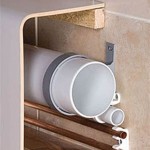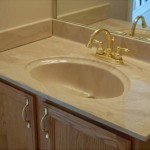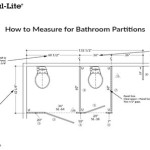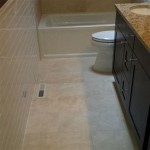Bathroom Wall Designs With Tile: A Comprehensive Guide
Bathroom wall tile is a crucial element in bathroom design, offering a blend of aesthetic appeal and functional benefits. The selection of tile impacts the overall ambiance, perceived space, and ease of maintenance within the bathroom. From classic subway tile to intricate mosaic patterns, there exists a vast array of options to cater to diverse tastes and design preferences. This article explores various aspects of bathroom wall designs with tile, focusing on key design considerations, tile types, installation techniques, and maintenance practices.
Design Considerations for Bathroom Wall Tile
Before embarking on a bathroom renovation or new construction project involving wall tile, several design considerations must be addressed. These considerations influence the type of tile selected, the installation pattern employed, and the overall aesthetic outcome. Careful planning is essential to achieve a visually pleasing and functionally sound bathroom space.
1. Bathroom Size and Layout: The size of the bathroom significantly impacts tile choices. Smaller bathrooms often benefit from lighter-colored tiles, as they tend to reflect light and create an illusion of spaciousness. Larger tiles, such as 12x24 inch or larger, can also visually expand a small space by minimizing grout lines. In contrast, larger bathrooms can accommodate darker colors and bolder patterns without feeling cramped. The layout also dictates the placement of tile; for instance, tiling only the shower area or a specific accent wall can be an effective design strategy.
2. Design Style and Aesthetic Preferences: The overall design style of the bathroom should inform the tile selection process. For a contemporary bathroom, sleek and minimalist tiles with geometric patterns or neutral colors might be suitable. Traditional bathrooms often incorporate classic subway tile, marble, or intricate mosaic patterns. Rustic or farmhouse-style bathrooms may feature natural stone tiles, wood-look tiles, or textured surfaces. Personal aesthetic preferences play a crucial role, as the bathroom should reflect the individual's taste and create a comfortable environment.
3. Color Palette and Lighting: The color palette of the bathroom should be carefully considered in relation to the tile selection. Neutral colors, such as white, gray, and beige, are versatile and can complement a variety of design styles. However, incorporating pops of color through accent tiles or decorative borders can add visual interest and personality. The lighting within the bathroom also influences the appearance of the tile. Natural light enhances the vibrancy of colors, while artificial lighting may require careful consideration to avoid harsh shadows or color distortion. Warm lighting tends to complement warmer tile tones, while cool lighting pairs well with cooler tile colors.
4. Budget Considerations: The budget allocated for the bathroom renovation project significantly impacts the tile options available. Tile prices vary widely depending on the material, size, complexity of design, and brand. Natural stone tiles, such as marble and granite, tend to be more expensive than ceramic or porcelain tiles. Intricate mosaic patterns and custom designs also increase the overall cost. It is essential to establish a realistic budget and prioritize tile selections based on affordability and aesthetic appeal. Exploring alternative materials or installation patterns can help to achieve the desired look without exceeding budgetary constraints.
Types of Bathroom Wall Tile
The market offers a wide variety of bathroom wall tile options, each with its unique characteristics, advantages, and disadvantages. Understanding the properties of different tile types is crucial for selecting the most appropriate material for a specific application. The following sections outline some of the most common types of bathroom wall tiles:
1. Ceramic Tile: Ceramic tile is a popular choice for bathroom walls due to its affordability, durability, and wide range of styles and colors. It is manufactured from clay that is fired at high temperatures, resulting in a hard and water-resistant surface. Ceramic tile is relatively easy to install and maintain, making it a practical option for homeowners. However, it is less dense than porcelain tile and may be more susceptible to chipping or cracking.
2. Porcelain Tile: Porcelain tile is a denser and more durable alternative to ceramic tile. It is manufactured from a finer clay and fired at higher temperatures, resulting in a less porous and more water-resistant material. Porcelain tile is suitable for both walls and floors and is particularly well-suited for bathrooms with high moisture levels. It is available in a variety of styles, including those that mimic natural stone or wood. While generally more expensive than ceramic, the added durability and longevity of porcelain tile can often justify the higher initial cost.
3. Glass Tile: Glass tile adds a touch of elegance and sophistication to bathroom walls. It is available in a wide range of colors, shapes, and sizes, allowing for creative and unique designs. Glass tile is naturally non-porous and stain-resistant, making it easy to clean and maintain. It also reflects light, which can enhance the brightness and spaciousness of a bathroom. However, glass tile can be more expensive than other tile types and may require specialized installation techniques.
4. Natural Stone Tile: Natural stone tiles, such as marble, granite, and travertine, offer a luxurious and timeless aesthetic to bathroom walls. Each piece of natural stone tile is unique, with variations in color, veining, and texture. Natural stone tile is durable and long-lasting, but it also requires regular sealing to prevent staining and water damage. It is generally more expensive than ceramic or porcelain tile and may require professional installation.
5. Mosaic Tile: Mosaic tile consists of small pieces of tile, typically arranged in intricate patterns or designs. It can be made from a variety of materials, including ceramic, porcelain, glass, and natural stone. Mosaic tile is often used as an accent feature, such as a border or a decorative panel, to add visual interest and texture to bathroom walls. It is available in a wide range of colors and styles, allowing for customization and personalization.
Installation Techniques and Maintenance Practices
Proper installation and maintenance are essential for ensuring the longevity and aesthetic appeal of bathroom wall tile. Incorrect installation can lead to water damage, cracking, and other problems. Regular maintenance helps to prevent staining, mold growth, and other issues that can detract from the appearance of the tile.
1. Surface Preparation: Before installing bathroom wall tile, it is crucial to prepare the surface properly. The wall should be clean, dry, and free of any loose debris or imperfections. Existing paint or wallpaper should be removed, and any holes or cracks should be filled with a suitable patching compound. For best results, apply a waterproof membrane to the wall before applying tile. This will prevent moisture from penetrating the wall and causing damage.
2. Tile Layout and Cutting: Carefully plan the tile layout before beginning the installation process. Use a level and a measuring tape to ensure that the tile is aligned correctly. Consider the placement of grout lines and the overall pattern you wish to achieve. When cutting tile, use a tile saw or a score-and-snap tile cutter to ensure clean and accurate cuts. Always wear safety glasses when cutting tile to protect your eyes from flying debris.
3. Applying Adhesive and Grout: Use a high-quality tile adhesive that is specifically designed for bathroom applications. Apply the adhesive evenly to the back of the tile using a notched trowel. Press the tile firmly onto the wall, ensuring that it is aligned correctly. Allow the adhesive to dry completely before applying grout. Use a grout float to apply the grout evenly to the tile surface, pushing it into the grout lines. Remove any excess grout with a damp sponge. After the grout has dried, seal it with a grout sealer to protect it from staining and water damage.
4. Cleaning and Maintenance: Regular cleaning is essential for maintaining the appearance of bathroom wall tile. Wipe down the tile surfaces with a damp cloth or sponge after each use to remove any water stains or soap scum. Use a mild detergent or tile cleaner to remove stubborn stains. Avoid using abrasive cleaners, as they can scratch or damage the tile surface. Periodically inspect the grout lines for any signs of mold or mildew growth. If mold or mildew is present, clean the grout lines with a bleach-based cleaner or a specialized mold and mildew remover. Reapply grout sealer every few years to maintain its water-resistant properties. Promptly repair any cracked or damaged tiles to prevent water damage and maintain the structural integrity of the wall.

Bathroom Wall Tiles Design Ideas Designcafe

15 Best Bathroom Tiles Designs That Make You Go Wow Livspace

The Trendiest Bathroom Wall Tiles Design And Ideas You Need

Small Bathroom Tile Design Designs Toilet And Wall

Durable Ceramic Bathroom Wall Tiles Design Livspace

Creative Bathroom Tile Design Ideas Tiles For Floor Showers And Walls In Bathrooms
Wall Floor Bathroom Ceramic Tiles Italian Design Icon Group

900 Bathroom Tile Ideas In 2024 Designs Inspiration

40 Chic Bathroom Tile Ideas Wall And Floor Designs

Bathroom Shower Tile Ideas
Related Posts







